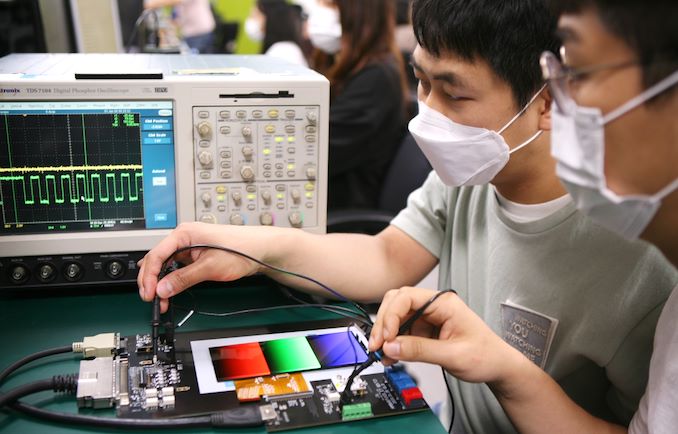By now we’ve become quite familiar with high refresh-rate displays in the mobile space, as the first pioneering 90Hz devices last year have now evolved into even faster refreshing 120Hz smartphones becoming the standard. Although all these devices provide augmented user experiences by providing extra smooth scrolling and gaming experiences, they all come with notable compromises when it comes to power efficiency and battery life.
Today, Samsung Display is announcing that they are for the first time revealing new generation display panels that allow for variable refresh rate technology, alleviating one of the biggest draw-backs of current generation high-refresh-rate smartphones. The new technology is makings its debut in the new Galaxy Note20 Ultra, which should be available to the public in just two short weeks.
Currently, the biggest issue for devices using a high refresh rate display is the fact that all current implementation still functions at a certain fixed refresh rate no matter what the screen content is, meaning they always stick to either 60, 90 or 120Hz depending on the smartphone.
This year’s smartphones with 120Hz display in particular have seen the effect of drastically increased power draw when operating under this higher refresh-rate. Although these phones offer the ability to switch between different refresh rates, one cannot call these mechanisms variable refresh rate (VRR) displays as they cannot seamlessly and quickly switch between these modes. As such, even when you’re displaying a fixed static screen, the display continues to refresh at 120Hz and incurs a large power draw penalty, which is less than ideal.
Samsung’s new display panel employed in the new Note20 Ultra is actually described as a VRR panel, with Samsung promising new refresh rate modes such as the ability to operate at 120, 60, 30 and 10Hz modes. The latter super-low refresh rates have been to date never been used in smartphones. Samsung describes that the display will now be able to lower itself down to this new 10Hz mode when viewing static content.
"Existing smartphone panels offer only a fixed refresh rate. They cannot automatically calibrate a phone’s refresh rate, which would result in image flickering caused by luminance differences at lower refresh rates. Samsung Display’s new backplane** technology eliminates flickering for operating frequencies as low as 10Hz."
Samsung describes the usage of a new backplane technology in order to achieve this – whilst we haven’t had an official response from Samsung to our questions on the matter, there’s been rumours that this is the generation in which the company has introduced LTPO backplane technology, allowing it higher switching performance and lower power consumption.
Another question which remains to be answered is exact details on Samsung’s VRR workings, and whether it is a proper implementation of adaptive sync technology and if it has finer refresh rate granularity in the 10-120Hz beyond just the mentioned 60 and 30Hz examples.
Currently such a VRR implementation would also require a deeper software stack integration into the OS, GPU driver and display driver to fully enable it a seamless operation that would work transparently on any kind of static or low-framerate content – we’ll have to investigate this topic more once Note20 Ultra devices are officially out.
Samsung claims that the new technology should be able to reduce the phone’s display panel power usage by 22% in general use. Furthermore, there’s a statement of it only using 60% of the power of current screens when it is operating in super-low 10Hz mode – although both these figures don’t specify to which baseline they’re being compared to (60 or 120Hz displays?).
Beyond making 120Hz a viable option for daily usage without major battery impact, the new technology should have the potential to improve power efficiency even beyond current 60Hz displays, which hopefully would usher in notably increased battery life in upcoming next-gen devices.
Related Reading:
- Samsung Announces Note 20 & Note 20 Ultra: Better S-Pen, New Finishes
- The Samsung Galaxy S20+, S20 Ultra Exynos & Snapdragon Review: Megalomania Devices
- The OnePlus 8, OnePlus 8 Pro Review: Becoming The Flagship
from AnandTech https://ift.tt/33QeaMT
via IFTTT


0 comments:
Post a Comment